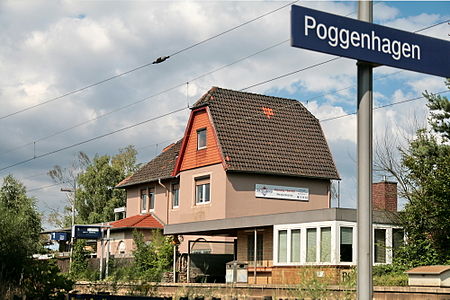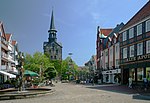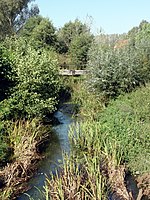Poggenhagen station
Hannover S-Bahn stationsRailway stations in Germany opened in 1908Railway stations in Lower SaxonyUse British English from January 2024

Poggenhagen is a railway station of category six located in Poggenhagen, a borough of Neustadt am Rübenberge, Germany. The station is located on the busy Bremen–Hanover railway and was opened in 1908; the last upgrade was for the launch of the Hanover S-Bahn in 2000, whose line S2 serves the station hourly. Passing sidings on the western side of the station are also used to run a non-electrified spur to nearby Wunstorf Air Base, but traffic on this spur is very infrequent in recent years. Historically, the spur was of major importance to transport goods to the base during the Berlin Airlift of 1948/1949.
Excerpt from the Wikipedia article Poggenhagen station (License: CC BY-SA 3.0, Authors, Images).Poggenhagen station
Alter Postweg,
Geographical coordinates (GPS) Address Nearby Places Show on map
Geographical coordinates (GPS)
| Latitude | Longitude |
|---|---|
| N 52.466666666667 ° | E 9.4541666666667 ° |
Address
Alter Postweg
31535
Lower Saxony, Germany
Open on Google Maps









